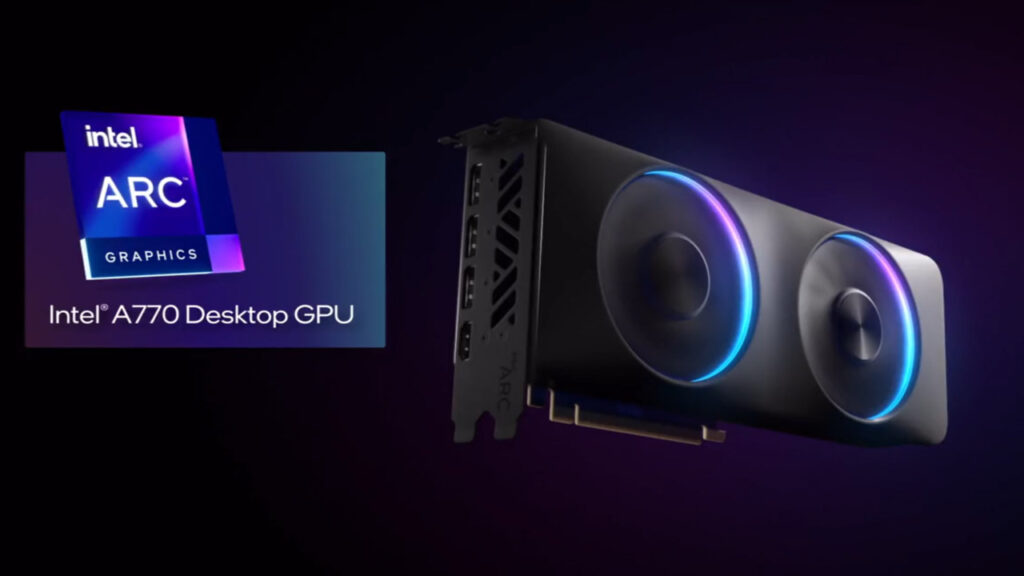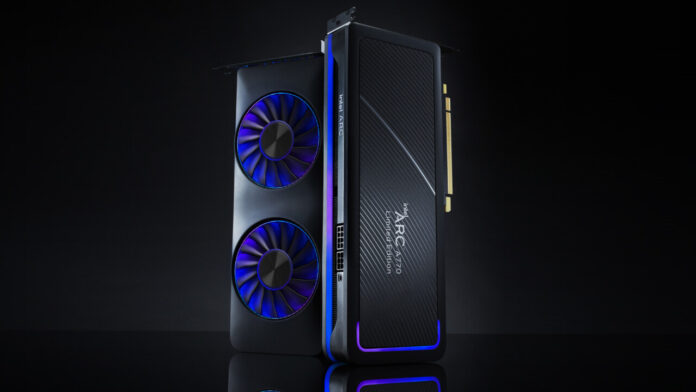Intel has been vying for the GPU market for over 15 years, slowly building a repertoire of integrated graphics cards that offered decent performance for a shallow price point.
They are finally pushing into the gaming market with their dedicated GPUs, the Intel Arc Alchemist series. Let’s have a look at their flagship model, the A770, and if it can genuinely offer the needed performance for a proper gaming PC.
Pricing and Release Date
The A770 has already come out on October 12th in two variants, offering either 8GB or 16GB of VRAM. The 8GB one costs 309$, with the 16GB variant costing 329$. If performance is important to you, having eight more GB of VRAM is a good deal for only 20$ more.
Specifications

The A770 has been built on the DG2-512 graphics processor using a 6nm process. It fully supports DX 12 Ultimate, but it seems that it can sometimes struggle with older APIs like DX 11 or Vulkan. The DG2-512 is a large chip with a die area of 406 mm2 and 21 billion transistors. It has 4096 shading units, 256 texture mapping units, 128 ROPs, and 32 ray-tracing acceleration cores.
As far as memory goes, the more expensive variant offers 16GB of GDDR6 VRAM, with a 256-bit memory bus that has a bandwidth of 512 GB/s. The memory clock runs at 2000 MHz which is pretty good for this amount of VRAM. Its base clock runs at 2100 MHz which can be boosted up to 2400 MHz; overclockers rejoice.
If you’re worried about power consumption, like its smaller brother, the A750, the A770 also has a TDP of 225 W. Intel recommends that you run it alongside a PSU of at least 550 W for optimal performance. The outputs are the same as the A750, one HDMI 2.1 and three DisplayPort 2.0.
Performance
When tested at 1080p with most games running at “ultra” settings, the A770 seems to handle most games pretty well. It generally outperforms the RTX 3060 by 13%, putting it on equal footing with the RX 6650 XT. It struggles with Horizon Zero Dawn, but Intel is aware of this issue and will continue optimizing for this particular title.
As we advance to 1440p Ultra, the performance of the A770 sees a consistent drop, similar to the A750. This is strange since it has eight more GB of VRAM, but it doesn’t look like they make that much of a difference. It is still 18% faster than the RTX 3060 and 8% faster than the RX 6650 XT.
For people interested in 4K gaming, you should probably look elsewhere since the A770 struggles a bit in this department when running games at Ultra settings.
All in all, the A770 is a more than decent graphics card, especially given its price. Intel still has an uphill battle regarding fixing driver issues, which is understandable given the fact that they just entered the dedicated GPU market. If the NVIDIA and AMD options seem far too expensive for your budget, maybe Intel can offer a better solution for this upcoming Christmas shopping spree.



